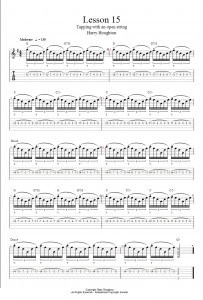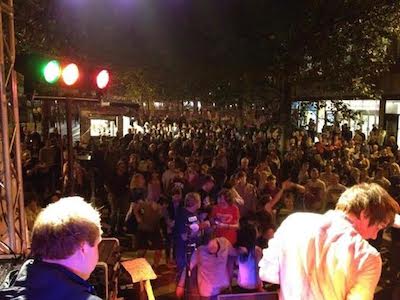This month we have a tapping lick using an open string in a pedal note fashion. It is based in the key of G and creates different chords by moving up and down the neck on one string.

The first chord is a G major chord, formed by tapping with our second finger on our right hand at the twelfth fret of the G string and pulling off to our fourth finger to the D at the seventh fret, then down to our first finger to the B at the fourth fret. We then pull off to an open G note, then hammer on to the B and then the D using the same fingers. This is all in sextuplets, so these first 6 notes take up 1 whole beat. The second beat is a direct repeat of the first, and beats three and four of the first bar switch to a G major 7 chord. All this means is that we change the note we tap at the twelfth fret from a G, to and F# at the eleventh fret, which we then repeat to complete our first bar. We then repeat this bar in it’s entirety.
The third bar changes to a C major chord, again tapping the G at the twelfth fret, then pulling off this time to the E at the seventh fret, then to the C at the fifth fret, down to the open G then back up to the C and E again. We repeat this for beat two before changing to a C major flat 5 chord, which again involves exchanging the G that we tap at the twelfth fret for an F# at the eleventh. Again we will repeat this bar.
Bars five and six are comprised entirely of an inverted D sus4 chord. This involves tapping the A note at the fourteenth fret of the G string, pulling off to the F# at the eleventh fret and then down to the D at the seventh fret, again down to the open G and back up to the D and F#. We play this eight times bringing us into bar seven. Bar seven and eight are almost identical to bars one to four, except we will change from G to G maj 7, and C to C major flat 5 on every beat as opposed to every other beat. Bar nine is a direct replication of bar five, which we carry on into bar ten for two beats (or two repetitions of the pattern) before finishing on a G5 power chord using open strings.
This is a great way to play legato licks very quickly and adding interesting notes to basic triads to create interesting chords by simply changing notes by a semitone/tone. It is very easy to create tension in your melodies, and this concept can easily be applied to minor and diminished chords and scales that we will look at next month.





